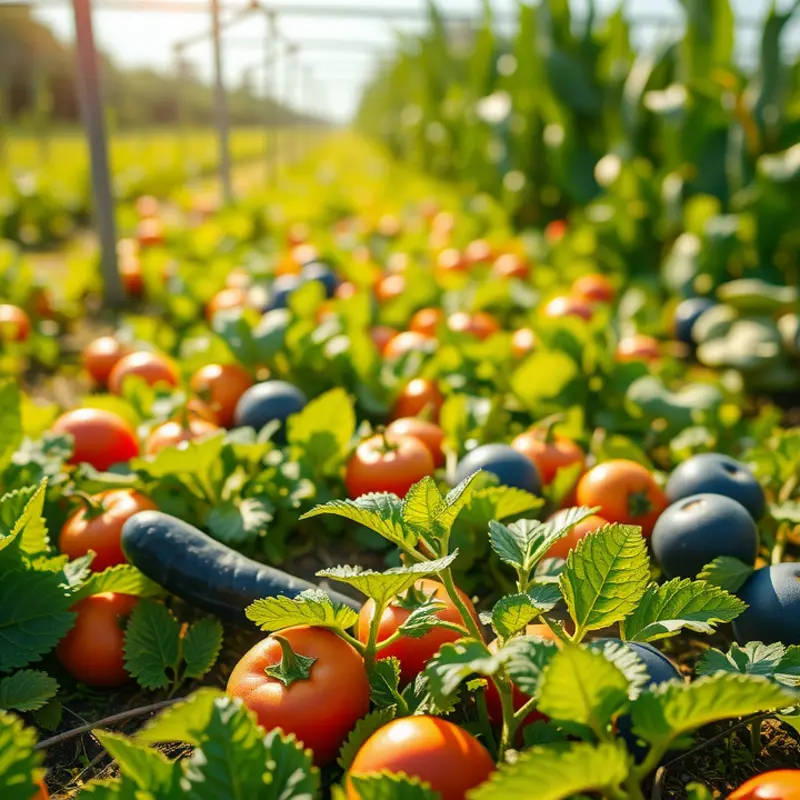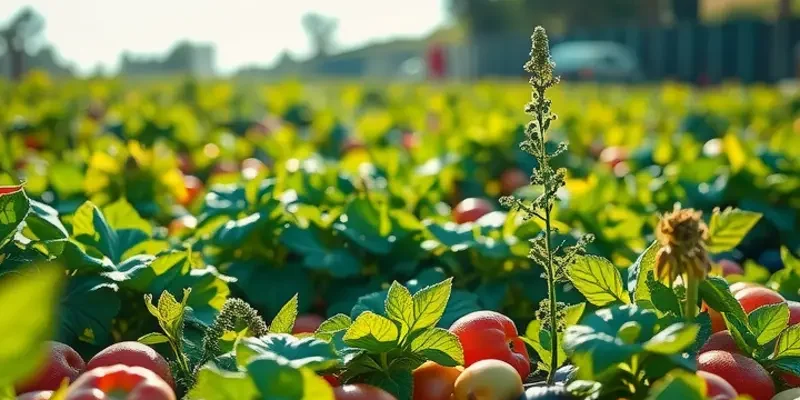Food choices significantly impact the environment, contributing to greenhouse gas emissions and resource depletion. By adopting eco-friendly eating habits, individuals can play a crucial role in reducing these emissions. From selecting sustainable ingredients to making mindful dietary decisions, every small change adds up to a greener planet. This guide offers practical tips and encouragement for environmentally-conscious individuals who are eager to make a difference through their food choices.
Embrace Plant-Based Eating

Transitioning to a plant-based diet is an impactful way to reduce your carbon footprint. Shifting away from meat-heavy meals can dramatically cut down greenhouse gas emissions associated with food production. Studies have shown that meat production, particularly beef, generates significantly more emissions compared to plant-based foods. Reducing meat consumption even slightly can contribute to a cleaner planet.
Looking locally for your produce is another excellent way to lower emissions. Local sourcing minimizes the transportation required for food to reach your kitchen table. This reduces the fuel consumption involved in transporting food over long distances and supports local farmers, enhancing community sustainability. Farmers markets and community-supported agriculture (CSA) programs are great options for sourcing fresh, local produce.
Plant-based eating doesn’t mean settling for bland meals. It means exploring new and exciting plant-based alternatives that can be as satisfying as traditional dishes. For example, chickpeas provide a hearty base for various dishes. You can incorporate them in salads or stews, or even roast them as a crunchy snack. For inspiration, check out this Mediterranean Chickpea Salad.
Transitioning your diet doesn’t have to happen overnight. Consider starting with ‘Meatless Mondays’ or plant-based meals a few times a week. This small step can make a significant difference over time. Gradually increase the number of plant-based meals as you discover new recipes and develop your cooking skills.
Experimenting with different grains, legumes, vegetables, and spices can open up a world of culinary options. Think about using lentils in soups, tofu in stir-fries, or mushrooms as a savory addition to any meal. These ingredients not only contribute to a lower carbon footprint but also provide numerous health benefits, including increased fiber and essential nutrients.
Incorporating plant-based alternatives can be an exciting culinary adventure. An increasing number of people are finding satisfaction in the diverse flavors and textures plant-based foods offer. As you transition, remember that each plant-based choice is a step toward a sustainable future.
Support Local and Seasonal Foods

Adopting a diet rich in local and seasonal foods is a practical step toward reducing your ecological footprint. When you choose locally sourced products, you cut down on the transportation emissions required to bring food to your plate. Imagine the journey a mango takes from a tropical country to a temperate-climate supermarket. Each mile means more fuel consumed and more carbon dioxide released into our atmosphere. By opting for locally grown apples during their peak season, for instance, you indulge in freshness while minimizing these emissions.
Local food systems bring about more than just environmental benefits. They support regional farmers, helping them sustain their livelihoods and encouraging agricultural diversity. This connection fosters a community sense and promotes awareness of where and how food is grown. Farmers’ markets are excellent venues to explore these local products. Purchasing at such markets not only ensures freshness but also assists in maintaining agricultural practices that support biodiversity.
Seasonal eating often aligns with whole, nutrient-rich food consumption, enhancing both quality and taste. When harvested at their natural peak, fruits and vegetables possess optimal flavor and nutritional value. Seasonal foods do not require artificial ripening processes or extensive refrigeration, which otherwise increase energy use. This means you are likely consuming fewer processed items with reduced packaging waste.
There’s a synergy between seasonal foods and diverse diets. Relying on what grows naturally during different times of the year encourages variety. This variety can enhance nutritional intake and make meal planning a creative endeavor. Incorporating seasonal foods into meals doesn’t have to be daunting. For example, a Mediterranean Chickpea Salad is a refreshing option that taps into common seasonal produce, offering a delicious way to stay inspired in the kitchen while adapting to the changing seasons. Such recipes can be found at Mediterranean Chickpea Salad: A Burst of Freshness.
Embracing small changes like supporting local farmers and choosing seasonal products can collectively lead to significant environmental impacts. It is a conscientious approach that reflects the emerging values of sustainability and community support. Transitioning to a diet focused on locally and seasonally sourced foods is not just an individual choice but a commitment to environmental stewardship and communal health.
Final words
By incorporating plant-based meals and supporting local food systems, environmentally-conscious individuals can collectively make a powerful impact on reducing food-related emissions. These choices not only promote sustainability but also encourage healthier lifestyles and stronger community connections. Take these actionable steps today, knowing that each meal can contribute to a brighter and more sustainable future.








